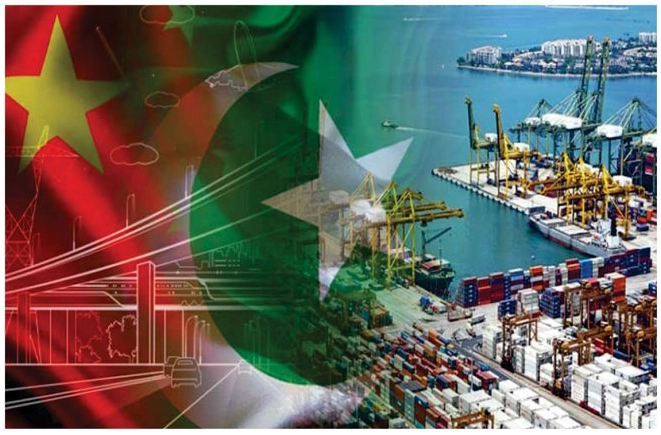The China-Pakistan Economic Corridor (CPEC) is a transformative project that has evolved since its inception in 2013. Initially valued at $46 billion, its worth surged to $62 billion by 2020, and in 2022, Chinese investment in Pakistan had grown to $65 billion. As a key component of China’s Belt and Road Initiative (BRI), CPEC represents a strategic partnership between Pakistan and China, and its success must align with the Sustainable Development Goals (SDGs).
With the United Nations’ SDGs Summit in New York in 2023, there has been a growing emphasis on integrating SDGs into the CPEC framework. The United Nations-Pakistan has initiated SDGs dialogues in 12 cities to accelerate progress towards these goals. It is essential to establish a dedicated CPEC-SDGs dialogue to ensure sustainable development. China’s approach to sustainable development, characterized by harmonious coexistence, mutual collaboration, a win-win policy and recognition of its rich civilizational heritage, offers valuable insight for aligning CPEC with the SDGs.
CPEC has already begun contributing to Pakistan’s sustainable development. During its first phase, it significantly boosted economic growth, job creation and infrastructure development in Pakistan. The State Bank of Pakistan reports that CPEC-related projects generated approximately 75,000 jobs from 2015 to 2021, reducing unemployment in the country. Furthermore, CPEC has spurred industrial development, leading to the establishment of numerous industries and special economic zones (SEZs). Pakistan’s long-term development plan, Vision 2025, aligns with several SDG priorities. Chinese foreign direct investment (FDI) is identifying actionable measures for CPEC investment, including infrastructure development, job creation and innovation in social services. Achieving the SDGs in Pakistan demands substantial financial resources and non-financial support, both of which CPEC and China can provide.
China’s commitment to sustainable development is evident in its 14th Five-Year Plan (2021-2025), which emphasizes innovation-driven growth, low-carbon development, social inclusion and addressing population aging. This plan aligns with the SDGs and reflects China’s determination to achieve higher quality, fairness and sustainability in development. China’s development model, as reflected in President Xi Jinping’s statements at various international forums, emphasizes multilateralism and harmonious coexistence, making it a valuable partner for Pakistan’s sustainable development journey.
Under President Xi Jinping’s leadership, China has actively promoted its global development diplomacy through platforms like the Shanghai Cooperation Organization (SCO), BRICS, G20 and various UN forums. President Xi’s statements at these forums consistently underscore China’s commitment to promoting sustainable development, poverty reduction and inclusive growth worldwide. One key aspect of China’s development model is its emphasis on infrastructure development. The BRI, of which CPEC is a significant component, seeks to enhance connectivity and promote economic development by building roads, railways, ports and energy infrastructure across participating countries. This approach aligns with the SDGs, particularly Goal-9 (Industry, Innovation and Infrastructure) and Goal-8 (Decent Work and Economic Growth).
Pakistan, geographically located at the crossroads of South Asia, Central Asia and the Middle East, finds itself in a unique position between China and the western world. This strategic location can be leveraged to its advantage in terms of development policy. By collaborating with both China and western countries, Pakistan can access diverse resources, technologies and expertise to achieve the SDGs along the CPEC route.
China’s remarkable economic transformation over the past few decades has positioned it as a global leader in sustainable development. Pakistan can benefit immensely from Chinese experience and expertise in fast and sustainable development. China’s success in poverty reduction, industrialization and infrastructure development can serve as a valuable blueprint for Pakistan as it strives to meet the SDGs.
China’s diplomacy, rooted in principles of multilateralism and harmonious coexistence, is a unique model for utilizing indigenous experience to promote sustainable development. China’s approach emphasizes win-win cooperation, respect for sovereignty and non-interference in the internal affairs of other nations. These principles align with the core values of the United Nations and the SDGs, making China a natural partner for countries seeking to address global challenges.
Moreover, Pakistan must keep an eye on developmental hegemony, which refers to a situation where powerful actors, often economically and politically dominant nations or corporations, dictate the terms and conditions of development in less powerful regions. In the context of CPEC, China’s economic prowess and influence have led to concerns that the project might perpetuate a form of developmental hegemony. Critics argue that the dominant role played by Chinese corporations and financing institutions might result in the prioritization of China’s interests over those of Pakistan and the local communities along the corridor.
The perspectives of local communities living along the CPEC route are crucial in evaluating the project’s impact. Many communities have expressed mixed feelings regarding CPEC’s effects on their development. To ensure that CPEC truly benefits local communities, it is essential to involve them in the decision-making processes, respect their rights and address their grievances. Community engagement should extend beyond job creation and involve investment in healthcare, education and social services to improve overall living standards.
The extent to which CPEC emancipates local populations remains a subject of debate. While job creation and economic opportunities have undoubtedly improved the livelihood of some, concerns linger about the equitable distribution of benefits. To promote true emancipation, CPEC should prioritize inclusive development that addresses the needs of marginalized and vulnerable groups.
CPEC’s benefits should ideally be shared among various stakeholders, including Chinese corporations, Pakistani businesses and local communities. The success of CPEC should not be measured solely by corporate profits but by its contribution to reducing poverty, improving healthcare and enhancing education in Pakistan. A balanced approach that fosters collaboration between China and Pakistan in achieving these goals is necessary. China’s 14th Five-Year Plan places a significant emphasis on sustainable development, including green growth, innovation and social inclusion. This plan can serve as a blueprint for aligning CPEC with sustainable development objectives. Cooperation between Pakistan and China in implementing this plan along the corridor can lead to more balanced and equitable development outcomes.
(shakeelgsisd@gmail.com)










